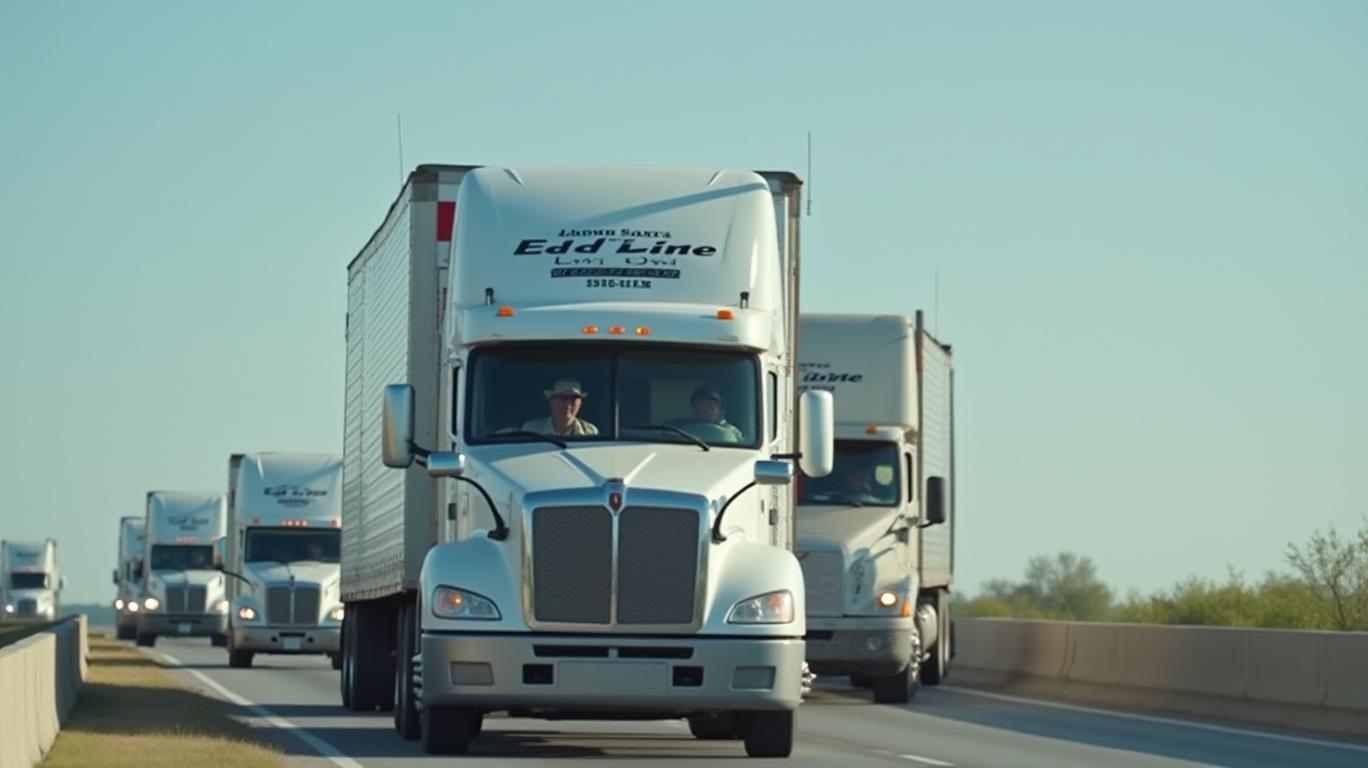Old Dominion's Q1 Results Signal Resilience Amid Economic Headwinds
Old Dominion Freight Line (NASDAQ: ODFL) delivered its first-quarter 2025 earnings amid a backdrop of economic softness and industry-wide challenges, revealing a mix of declining metrics and pockets of operational strength. While revenue and profit fell year-over-year, the company’s focus on cost discipline, service excellence, and strategic capital allocation offers clues about its ability to weather the current downturn.
Financial Performance: Revenue Decline, Margin Pressure
The quarter opened with total revenue of $1.374 billion, a 5.8% year-over-year drop. The bulk of this decline came from LTL services, which fell 5.9% to $1.361 billion. Notably, other services revenue grew 5.1% to $140.2 million, suggesting diversification efforts are bearing some fruit. However, operating income tumbled 12.5% to $338.06 million, with the operating ratio worsening to 75.4% from 73.5% in Q1 2024. This metric, a key gauge of efficiency, reflects the strain of lower volumes on fixed costs.
Net income dipped 12.9% to $254.66 million, while diluted EPS fell 11.2% to $1.19. The drop in shares outstanding (down 2.4%) highlights ongoing buybacks, but the EPS decline underscores the top-line pressures.
Operational Metrics: Volume Headwinds, Pricing Gains
The core LTL business faced significant volume declines. Tons per day fell 6.3%, driven by a 5.0% drop in shipments per day and a 1.4% decrease in weight per shipment. These figures align with broader industry trends as businesses reduce discretionary spending. However, LTL revenue per hundredweight rose 2.2% to $32.67, with a 4.1% increase excluding fuel surcharges. This pricing discipline—achieved despite lower fuel prices—suggests Old Dominion is maintaining its premium service positioning.
Service metrics remained strong: 99% on-time delivery and a cargo claims ratio below 0.1% underscore reliability. Yet the average length of haul dropped slightly to 916 miles, a potential indicator of shifting customer demand toward shorter routes or less bulky shipments.

Capital Allocation and Shareholder Returns
Old Dominion prioritized liquidity and flexibility. Cash flow from operations reached $336.5 million, while the company reduced its 2025 capital budget by $125 million to $450 million. The revised plan allocates $210 million to real estate and service centers, $190 million to vehicles, and $50 million to IT—a sign of cautious yet strategic investment.
Shareholder returns totaled $260.6 million, with $201.1 million in buybacks and $59.5 million in dividends. This balance reflects the board’s confidence in the company’s cash flow resilience, even as it scales back capital spending.
Management Perspective: Navigating the Downturn
CEO Marty Freeman cited the “continuing domestic economic slowdown” and lower fuel prices as key factors behind the revenue softness. He emphasized Old Dominion’s long-term strategy: disciplined pricing, service-driven differentiation, and selective network investments. The company also noted that rising operating expenses as a percentage of revenue were partly due to fixed costs becoming a larger burden in a low-volume environment.
The reduction in active employees (down 4.7% to 21,817) suggests workforce adjustments to align with demand, a move that could help stabilize margins as volumes rebound.
Risks and the Road Ahead
Old Dominion faces risks tied to macroeconomic conditions, including potential further declines in business spending and regulatory pressures. Fuel prices, though a headwind in the near term, could stabilize or reverse, impacting yields. The company’s reliance on LTL—99% of revenue—also leaves it exposed to sector-specific shifts.
Yet Old Dominion’s track record of outperforming peers in downturns offers hope. Its 99% on-time delivery rate and low claims ratio, combined with a leaner capital budget and strong cash flow, position it to capture market share as competitors retrench.
Conclusion: A Sturdy Ship in Rough Waters
Old Dominion’s Q1 results paint a company navigating choppy waters with discipline. While revenue and profits fell, its ability to grow pricing power in a weak volume environment and maintain service excellence signals underlying strength. The 4.1% yield improvement excluding fuel surcharges, paired with a 99% on-time delivery rate, suggests its service-driven model is intact.
Investors should weigh the 12.9% net income drop against the company’s reduced capital spending and robust cash flow. With $336.5 million in operating cash and a $450 million budget—now more focused on critical needs—the balance sheet remains sturdy.
The operating ratio’s 190-basis-point increase is a concern, but it’s consistent with industry trends. If the economy stabilizes, Old Dominion’s efficiency gains and pricing power could reverse the margin pressure. For now, the stock’s valuation—trading at ~12x forward EPS—offers a margin of safety for long-term investors willing to bet on Old Dominion’s ability to outlast the current slump.
In a sector struggling with volume declines, Old Dominion’s resilience in service and cash flow metrics positions it as a survivor—and potentially a beneficiary—when conditions improve.


_442a2dcc1749832873286.jpeg)
_e68fac6d1749831664430.jpeg)






